Patrol aircraft General Aircraft GAL 38 Fleet Shadower (UK)
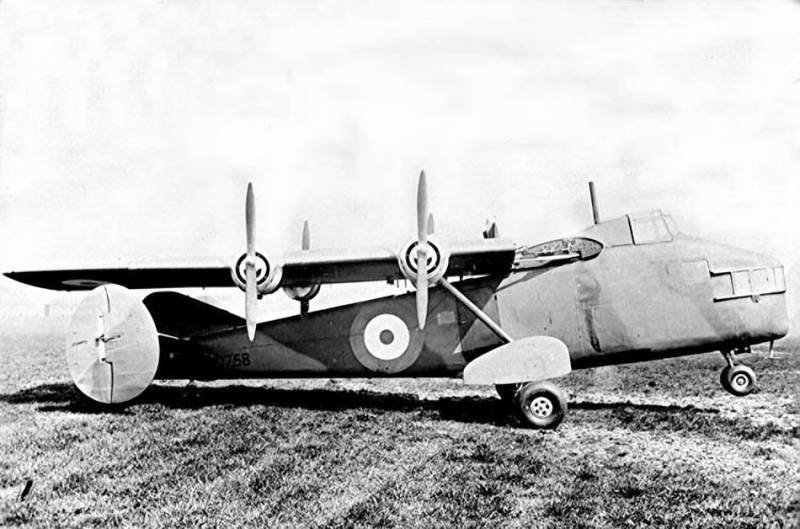
The second prototype aircraft GAL 38, made according to the original version of the project. Demonstration of the wing folding mechanism
In the late thirties, the Royal Navy of Great Britain initiated the development of a promising long-range patrol aircraft designed to search for enemy ships and submarines. As part of this program, two aircraft were created, and one of them was the GAL 38 Fleet Shadower. This machine showed the required characteristics, but did not have much prospects.
By order of the Admiralty
In the second half of the thirties, the Admiralty was actively working on the modernization of the park aviation CVMF. In particular, the need was determined to create a promising long-range patrol aircraft suitable for operation at airfields and aircraft carriers. Such a machine was planned to be used for reconnaissance and target designation in the interests of surface forces. fleet.
In 1937, the CVMF coordinated its plans with the Ministry of Aviation. Then the two structures jointly formed the tactical and technical requirements for the future aircraft. Specification S.23/37 was released and development started.
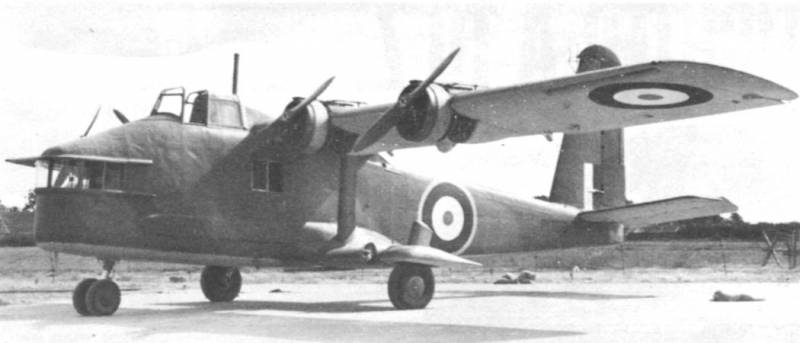
First prototype after modernization 1941
In accordance with this document, the new aircraft had to have a specific look and capabilities. It was required to provide high takeoff and landing characteristics and use a folding wing - this was required for operation on aircraft carriers. The car was supposed to cruise at a speed of only 38 knots (70 km / h) at an altitude of 1500 feet (460 m) and fly for 6 hours. It was proposed to search for enemy ships visually, for which a cabin with good visibility was needed. For target designation, ships and other aircraft should have provided a radio station.
Applications for participation in the program were submitted by five aircraft manufacturing companies. The Admiralty and the Ministry of Aviation studied the proposed preliminary projects and chose the two most successful ones for further development. In August 1938, Airspeed Ltd received a contract to continue the development, construction and testing of two prototypes. In November, a similar agreement appeared with General Aircraft Ltd. (GAL).
GAL quickly coped with the task by creating and building a new type of experimental machine. Her aircraft received the designation GAL 38 and the name Fleet Shadower - “Fleet Chaser” or “Shadow Following the Fleet”.
"Fleet Chaser"
Specification S.23/37 made special demands and imposed characteristic limitations. In this regard, the GAL 38 had an original look with several recognizable features and bold innovations. Some of these measures justified themselves and provided the required level of performance.
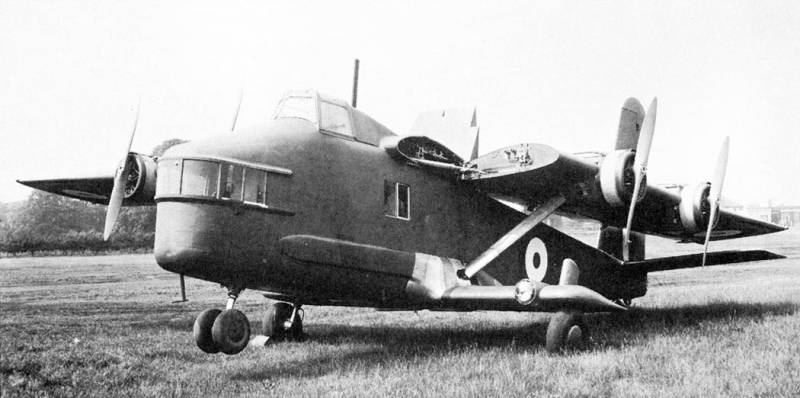
Flight prototype with folded wing
Patrol GAL 38 was built according to the scheme of a strut polutoraplan with four piston engines on the upper wing. Also used a curious layout of the fuselage with a bunk cabin. For use on an aircraft carrier, mechanisms for folding the upper wing were provided. Other devices, such as a landing hook, were not required due to the high landing performance.
The aircraft received a fuselage with a wooden-metal frame and sheathing made of sheet metal and canvas. The nose of such a fuselage was characterized by increased height and accommodated crew jobs. The pilot was located at the top under the sliding canopy. Under it was a separate cabin for the observer and radio operator. For a better view around the observer, panoramic windows were provided. The radio operator and his equipment were behind the observer. The central part of the fuselage was given under the fuel tanks and other equipment.
The upper wing with a span of 17 m had a center section with a hinge and folded almost along the line of the fuselage side. Two compact engine nacelles were placed on the consoles. At the end parts of the plane there were slats of limited size. The entire trailing edge stood out for the ailerons and flaps. The high efficiency of mechanization was ensured both by its large area and by airflow from propellers.

Rear view
An additional lower wing was also provided, the span of which was about a third of the upper one. The two wings were connected by struts. The tail unit included a triangular keel of increased length and a stabilizer with keel washers at the ends.
The Fleet Shadower project involved the use of four Pobjoy Niagara V 7-cylinder radial engines with 140 hp each. The engines used two-bladed constant-pitch wooden propellers.
The aircraft received a three-point fixed landing gear. The self-orienting front strut carried two wheels of a smaller diameter. The main struts were placed under the lower wing tips.
Experienced GAL 38 did not carry any weapons. Perhaps in the future the aircraft could receive machine guns for self-defense. External suspension for weapons was not provided. The tasks of the aircraft were limited only to patrolling and detecting targets. The destruction of enemy submarines and ships was assigned to other combat units of the fleet and naval aviation with suitable weapons.
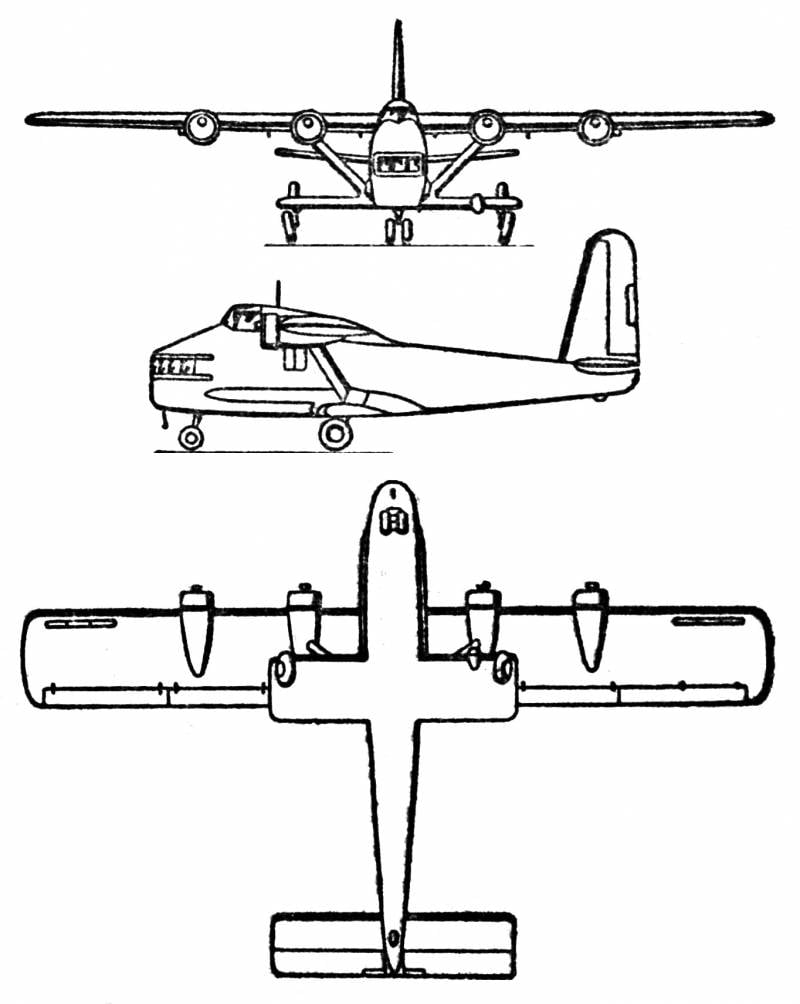
Scheme of the upgraded GAL 38
The resulting patrol aircraft had a length of 11 m and a wingspan of 17 m. Height - approx. 3,9 m. The empty GAL 38 weighed 2,8 tons, the maximum takeoff weight was 3,9 tons. According to calculations, the maximum speed should have reached 185 km / h with a cruising speed of 150 km / h. In addition, it was possible to meet the requirements for slow flight for observation. Flight duration - up to 11 hours.
Objective limitations
The GAL 38 project as a whole was ready by the end of 1939, and after that General Aircraft Ltd. started building a prototype. There were problems at this stage. Subcontractors from Pobjoy Airmotors did not have time to complete the development of a new Niagara V engine with the required characteristics, which is why the prototype aircraft had to be equipped with 88-horsepower Niagara III products. In this form, in the spring of 1940, the car was rolled out of the assembly shop.
The first flight of the GAL 38 took place on May 13, 1940. Flight tests quickly confirmed all the calculated characteristics. Even with non-standard engines, the aircraft showed the required takeoff and landing characteristics and could fly at speeds from 63-65 km / h without the risk of stalling. The wing with advanced mechanization confirmed its potential. The large glass area of the lower cockpit simplified observation and target designation.
However, it was not without problems. First of all, there was insufficient stability in some flight modes. Also, the power of Niagara III temporary engines was not always enough. In addition, there were serious performance limitations: the crew could only observe during the day.
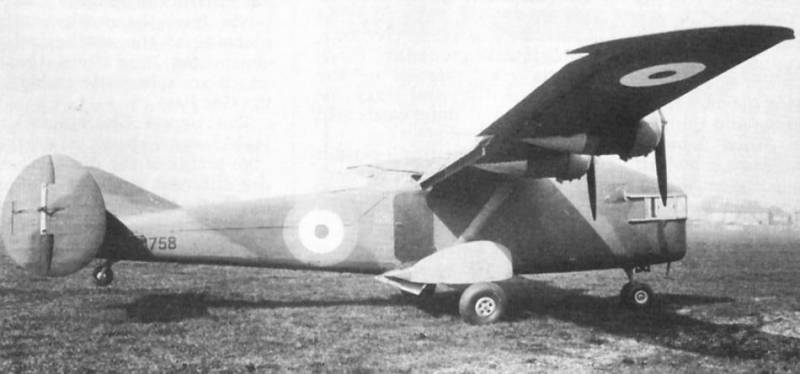
The second prototype that did not take to the air
In the middle of 1940, the development company began to improve the project, taking into account the results of the first stage of testing. After the completion of these works, it was supposed to rebuild the existing prototype. In addition, by this time the construction of the second "Pursuer" had begun. It is curious that this aircraft was completed according to the original version of the project and was not further developed.
Plane without a future
By the beginning of 1941, aircraft from GAL and Airspeed were tested and showed their capabilities. The Admiralty studied the results of these activities and drew conclusions. Unfortunately for the two contractors, both aircraft did not suit the customer. In February, an order was issued canceling further work on topic S.23 / 37.
The reason for criticism was the specific flight data, incl. instability of both samples. However, the chosen method of observation and reconnaissance was considered the main drawback of the aircraft. An observer with binoculars could search for enemy ships only during the day, in good weather and at a limited range, which reduced the possible effectiveness of a patrol aircraft. At the same time, the first radars suitable for mounting on air platforms have already been created. This direction was considered more convenient, and the specialized visual reconnaissance vehicle was abandoned.
However, General Aircraft Ltd. did not stop working. The companies were allowed to complete the development of the project and rebuild the first prototype. By the summer of 1941, this machine received standard Niagara V engines and a new tail unit with a large keel and no side washers. Also changed the design of individual units.
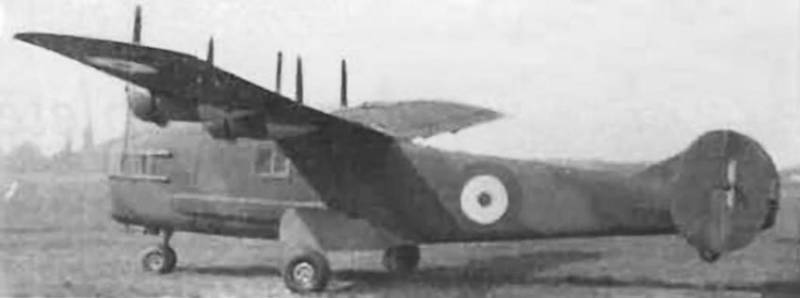
View from a different angle
The first flight in this configuration took place in June 1941. Further tests showed a slight increase in flight performance and partial relief from previously identified problems. Flights continued until September, with only the rebuilt first prototype taking part. If necessary, it was repaired using parts taken from the second car.
New Technologies
In October of the same year, the Admiralty ordered General Aircraft Ltd. dispose of the partially understaffed second prototype GAL 37. A similar order regarding the flight prototype was received in March 1942. On this story interesting project is over.
However, the Royal Navy of Great Britain was not left without the required equipment. Already in 1941-42. the first experimental patrol aircraft with radars on board were created. Aircraft of domestic and foreign production were used as a platform for new electronics. And such machines, unlike the "Pursuers", were able to effectively solve the assigned tasks - and left their mark on the history of the war at sea.
Information